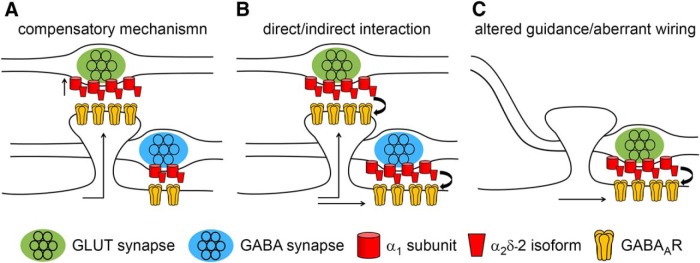Figure 5.
Potential mechanisms explaining the observed mismatched synapse formation of glutamatergic nerve terminals expressing α2δ-2. A, Compensatory mechanism. Elevated expression of α2δ subunits increases presynaptic calcium channel abundance and current densities and thus glutamate release. Therefore, GABAARs could be recruited to the dendritic spine in an attempt to compensate for excessive excitatory synaptic activity. If this is the case, then GABAAR abundance at inhibitory synapses should not change upon α2δ-2 overexpression in GABAergic presynaptic terminals. B, α2δ-2 may be involved in trans-synaptically anchoring postsynaptic GABAARs. In this scenario, GABAAR abundance should be increased when α2δ-2 is overexpressed in both glutamatergic and GABAergic synapses. C, Trans-synaptic function of α2δ-2 could also induce aberrant axonal wiring by guiding glutamatergic axons to GABAergic postsynaptic locations positioned along dendritic shafts. This is in contrast to the normal situation in which glutamatergic synapses are generally formed on dendritic spines.

